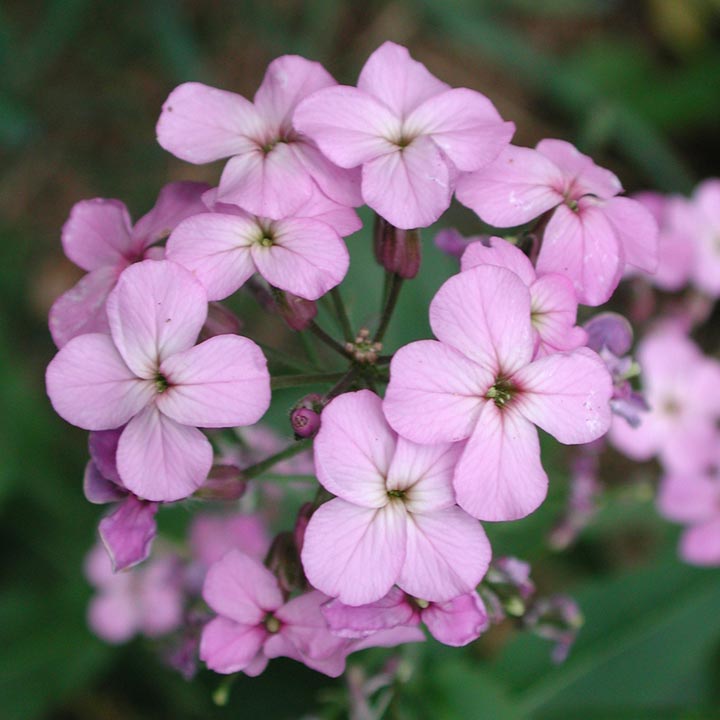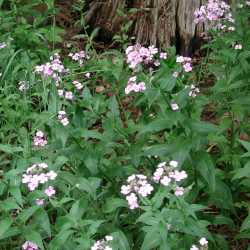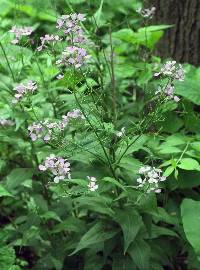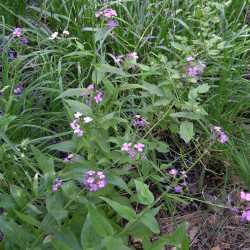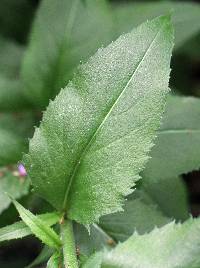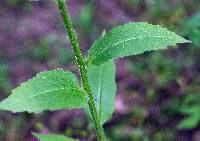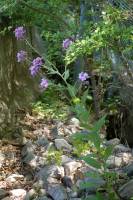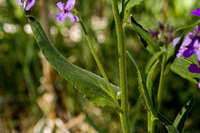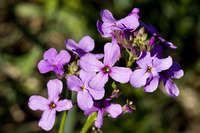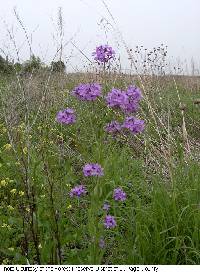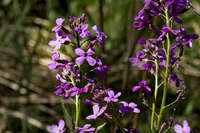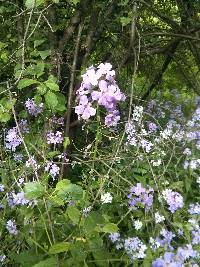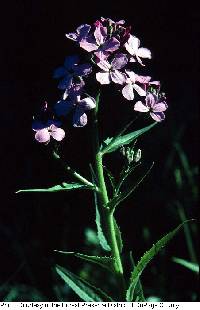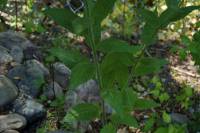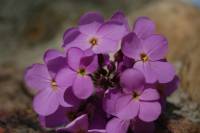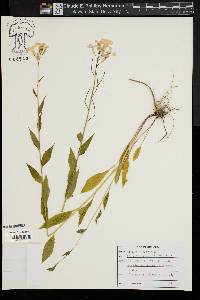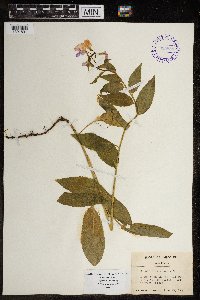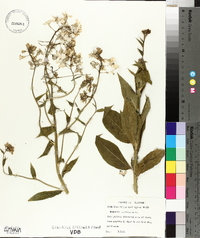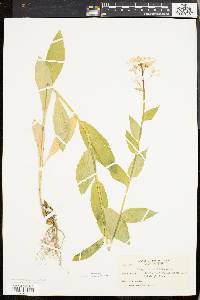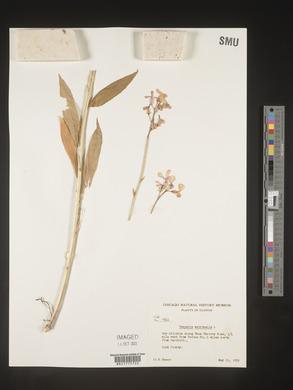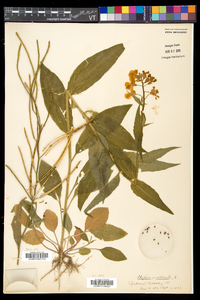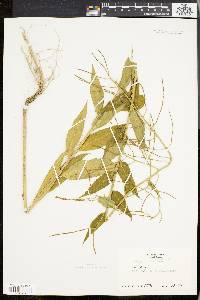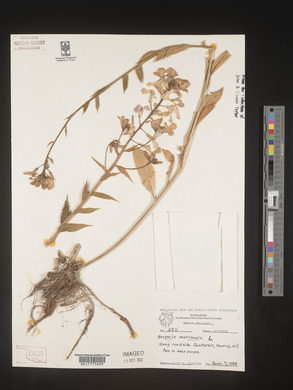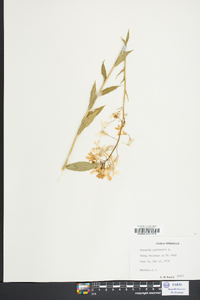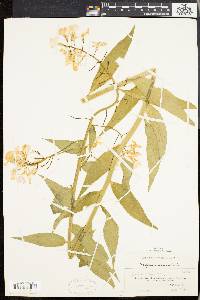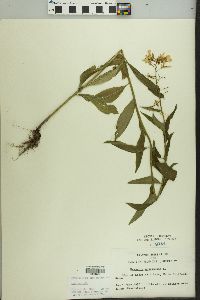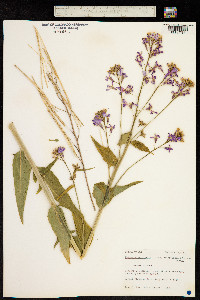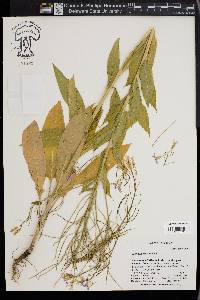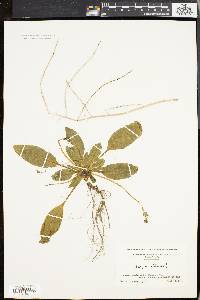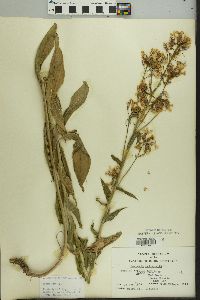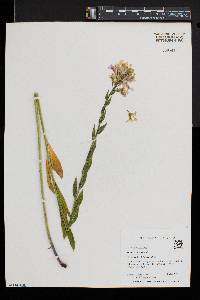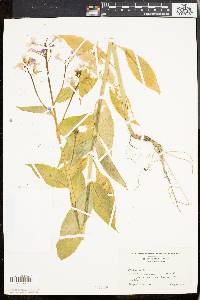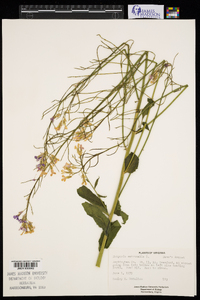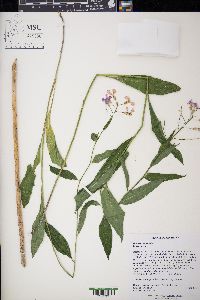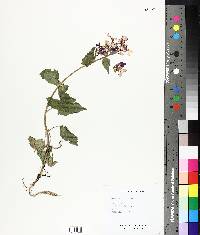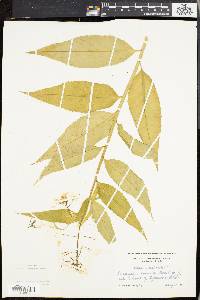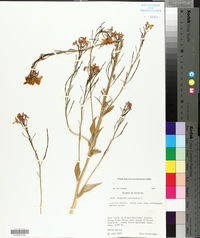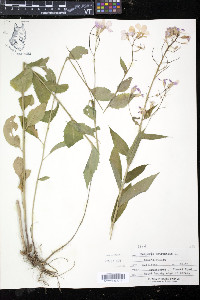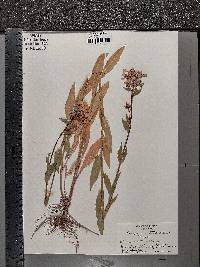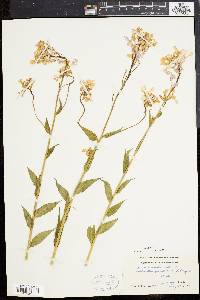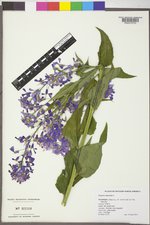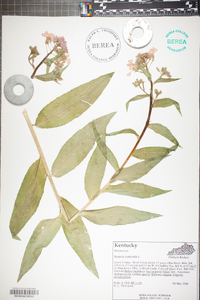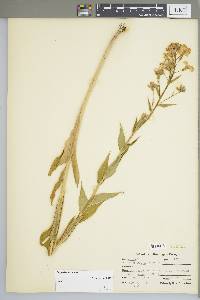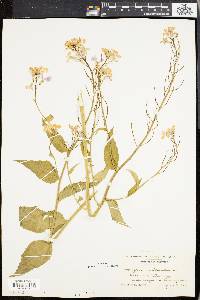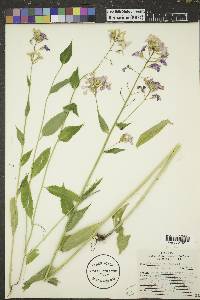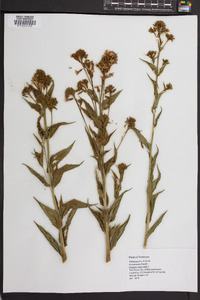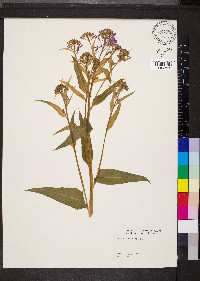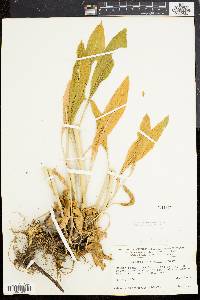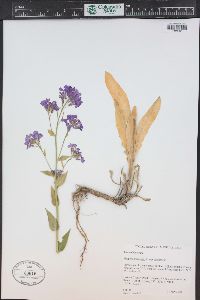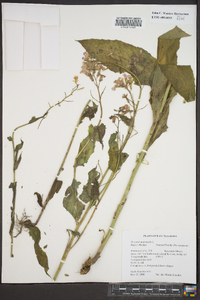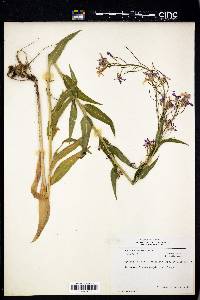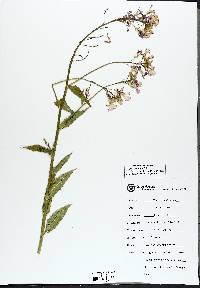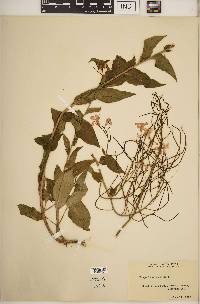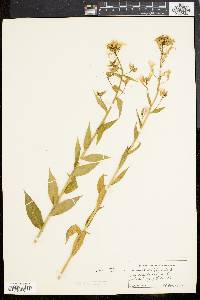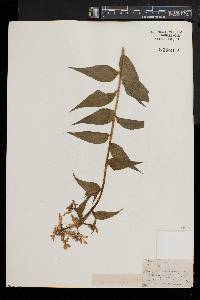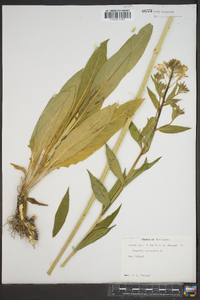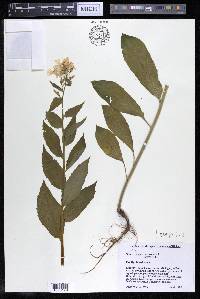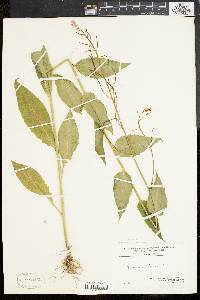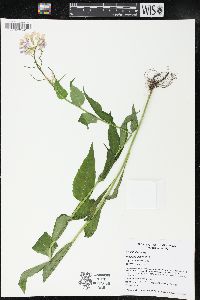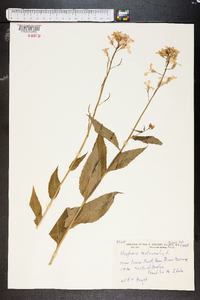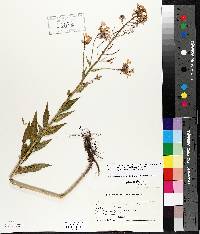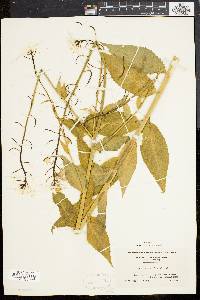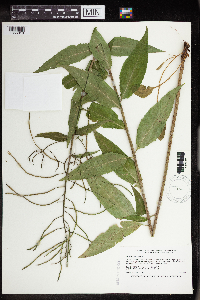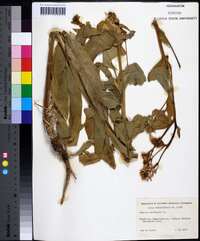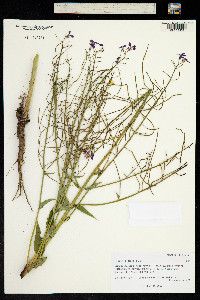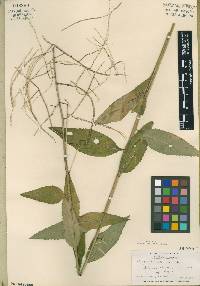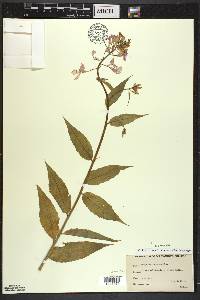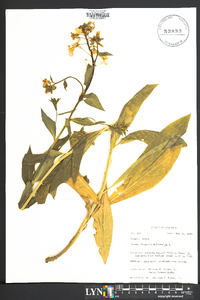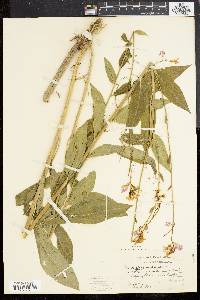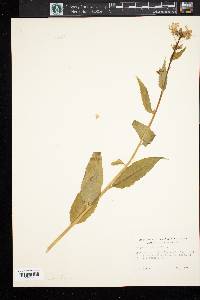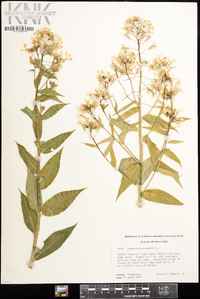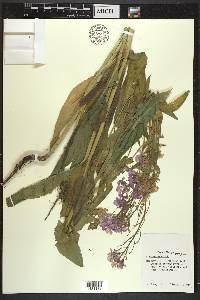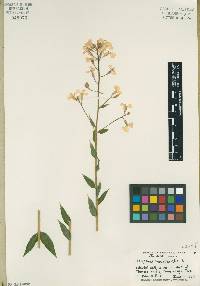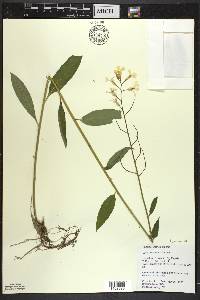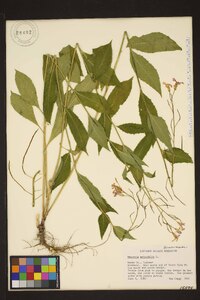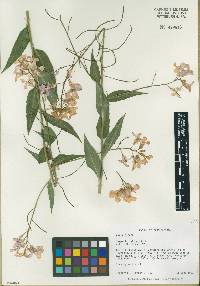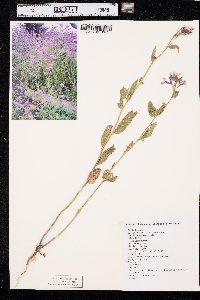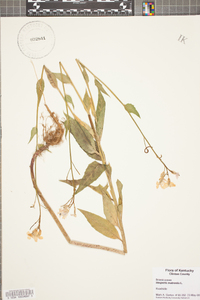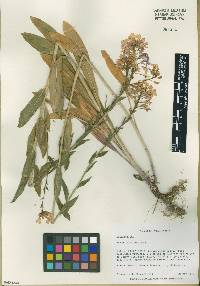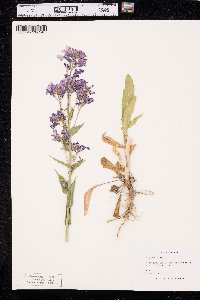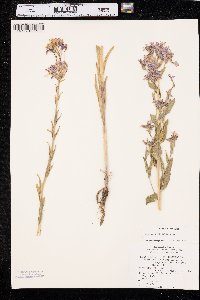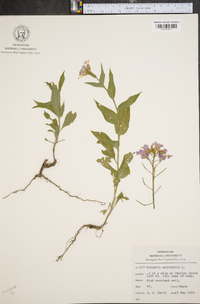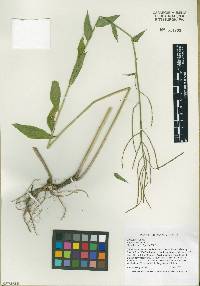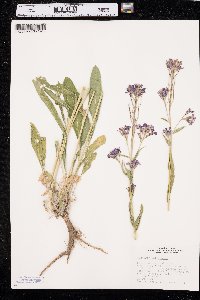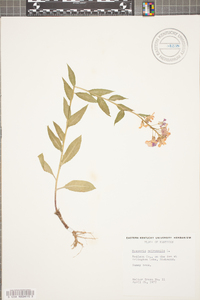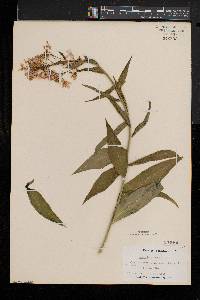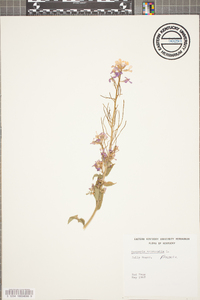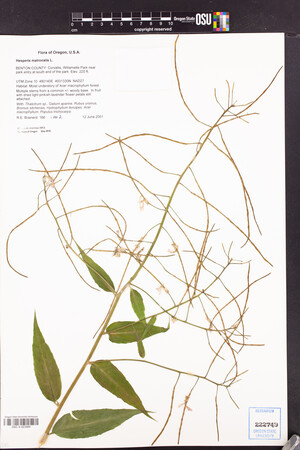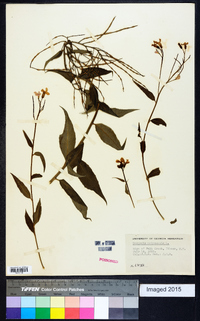Hesperis matronalis
|
|
|
|
Family: Brassicaceae
Dame's Rocket, more...mother-of-the-evening
[Hesperis sibirica] |
Stems unbranched basally, often branched distally, 4-8(-11) dm, often eglandular, glabrous distally. Basal leaves withered by flowering, long-petiolate. Cauline leaves short-petiolate; blade narrowly oblong, lanceolate, or broadly ovate, (2-)4-15(-20) cm × (4-)8-40 (-60) mm, base cuneate, margins denticulate or entire, apex acute or acuminate, surfaces pubescent. Fruiting pedicels (5-)7-17(-25) mm. Flowers: sepals 5-8 × 1.5-2 mm; petals (13-)15-20(-22) × 3.5-9 mm, claw 6-12 mm; filaments 2.5-6 mm; anthers 2.5-4 mm. Fruits (4-)6-10(-14) cm × 2-2.5 mm. Seeds (2.5-)3-4 × 1-1.5 mm. 2n = 24. Flowering Apr-Jul. Gardens, roadsides, oak glades, waste areas, bluffs, floodplains, abandoned fields, railroad embankments, thickets, woodland; 0-2200 m; introduced; Alta., B.C., Man., Nfld. and Labr. (Nfld.), N.S., Ont., P.E.I., Que., Sask.; Ark., Calif., Colo., Conn., Del., D.C., Idaho, Ill., Ind., Iowa, Kans., Ky., Maine, Md., Mass., Mich., Minn., Mo., Mont., Nebr., Nev., N.H., N.J., N.Y., N.C., N.Dak., Ohio, Oreg., Pa., R.I., S.Dak., Tenn., Utah, Vt., Va., Wash., W.Va., Wis., Wyo.; se Europe; c, sw Asia; n Africa; introduced also in South America (Argentina, Chile). Biennial or perennial herb 0.5 - 1 m tall Stem: upright, often branched above, and hairy. Leaves: alternate, stalkless or short-stalked, not clasping, to 12 cm long, to 4 cm wide, lance-shaped to triangular lance-shaped, sharp-toothed, teeth small and not close together, hairy. Flowers: in a loose cluster (raceme). Racemes to 30 cm long. Sepals four, purplish, upright, forming a mock tube around the petal bases, to 6 mm long, to 1.5 mm wide. Petals four, purple to bluish purple (varying to pink or white), 2 - 2.5 cm long. Stamens six. Flowers fragrant. Fruit: a long, narrow pod (silique), widely spreading, 5 - 10 cm long, linear or cylindrical, somewhat constricted between the seeds. Seeds in one row, 3 - 4 mm long. Similar species: No information at this time. Flowering: mid-May to early August Habitat and ecology: Introduced from Europe. Often planted in gardens, from where it frequently escapes into partially shaded waste ground, open woods, vacant lots of our suburban towns, roadsides, and a variety of other places. In late May and June, colonies of blooming plants are quite conspicuous. Once established it can become very persistent. Occurence in the Chicago region: non-native Etymology: Hesperis comes from the Greek word hesperos, meaning "the evening," which refers to the plant's fragrance at that time of day. Matronalis refers to the Roman festival of the matrons, which was celebrated on March 1st. Author: The Morton Arboretum Erect biennial or perennial 5-10 dm, often branched above; lvs lanceolate or deltoid-lanceolate, short-petioled or sessile, remotely and sharply denticulate, pubescent above with simple hairs, below chiefly with branched hairs; sep ±pubescent, fls fragrant; pet purple, varying to pink or white, 2-2.5 cm; frs 5-10 cm, somewhat constricted between the seeds; 2n=16, 24, 26, 28, 32. An old-fashioned ornamental, escaped along roads and in open woods and moist bottomlands; Que. and N.S. to Mich. and Io., s. to Ga. and Ky. May, June. Gleason, Henry A. & Cronquist, Arthur J. 1991. Manual of vascular plants of northeastern United States and adjacent Canada. lxxv + 910 pp. ©The New York Botanical Garden. All rights reserved. Used by permission. From Flora of Indiana (1940) by Charles C. Deam This species has long been used and is still commonly planted as an ornamental plant. It was never reported, however, by our early authors. The first report is that of Grimes in 1910. Nieuwland, in 1915, reported it as escaped along the bank of the St. Joseph River in St. Joseph County. In 1921 I found it to be frequent in a wooded ravine about a half mile west of Aurora in Dearborn County. In 1933 I found it to be a common and abundant weed along the roadside and in an adjacent, fallow field just west of Aurora. Naomi Mullendore has collected it in Johnson County. ...... Indiana Coefficient of Conservatism: C =null, non-native Wetland Indicator Status: FACU |
|
|
|

